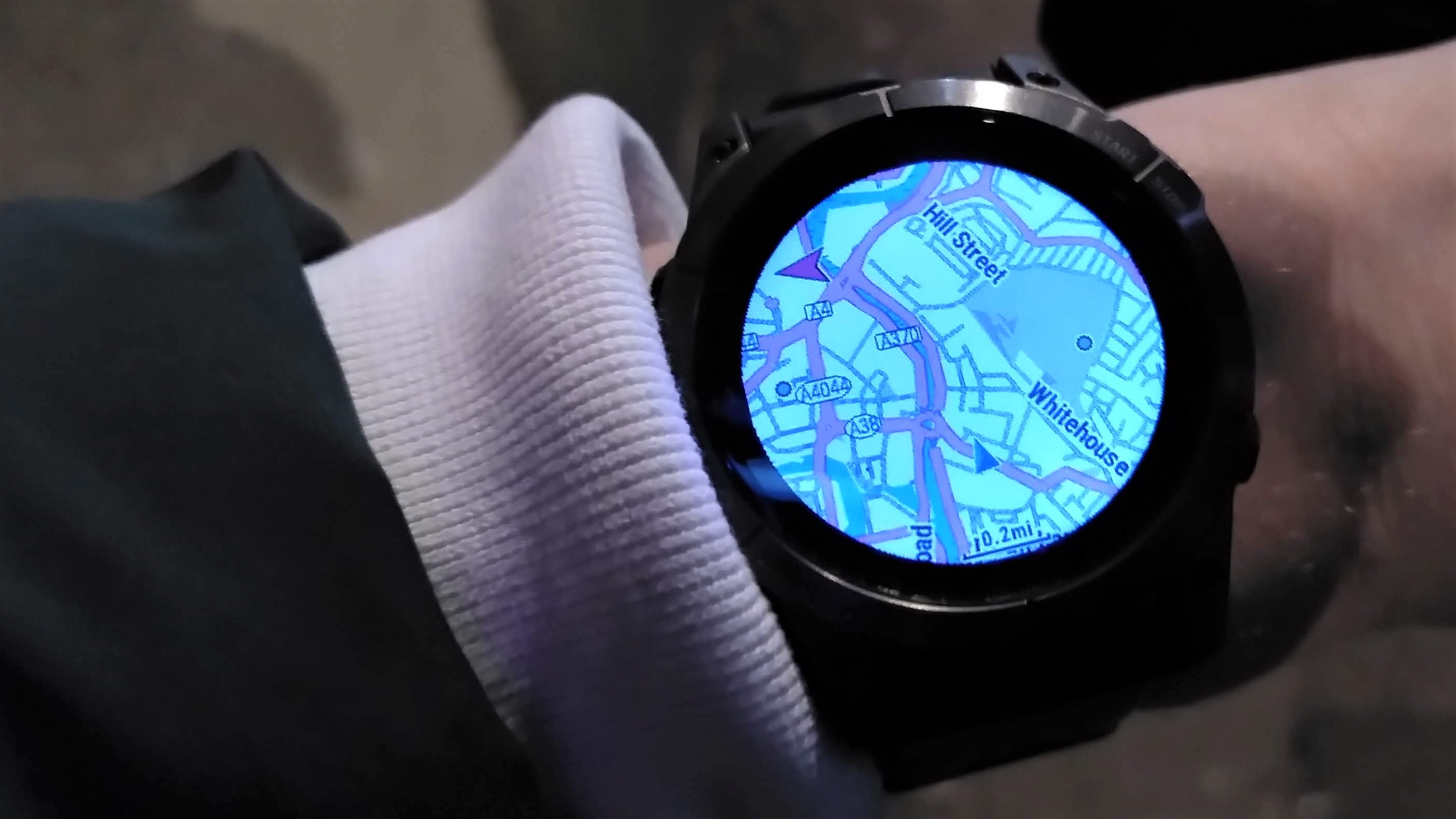
I've been lucky enough to start testing the Garmin Fenix 7 ahead of its launch, and you can check out TechRadar's hands-on review for our early impressions. But what's it been like using the new flagship sports watch in everyday life as a runner and run leader?
Day one: spinning
After familiarizing myself with the Fenix 7's updated interface (a touchscreen plus a quintet of physical buttons) and syncing it with the Garmin Connect app, I decide to take it for a test spin. Unfortunately I don't have the space for a Peloton Bike at home (maybe one day...) so that means it's off to the spin studio.
My gym is small and only hosts a spin instructor a couple of times a week, but there are Les Mills virtual classes streamed in the studio several times a day. There are a few options, but my personal favorite is The Trip – a 45-minute class in which you ride through a series of themed virtual landscapes, punctuated by hills and sprints to get your heart rate up. It's good base training, and one of my preferred options when it's dark and cold.
I select the Fenix 7's indoor cycling option and begin the warmup. Some Trips are harder than others, and this is one of the tougher ones, with relatively short recovery periods and plenty of speed work. It's satisfying to see my heart rate change on the watch's face almost instantly as I pick up the pace or crank up the resistance, then drop back down again as I ease off. Next time I'll take a chest strap heart rate monitor as well, so I can compare the two like-for-like,
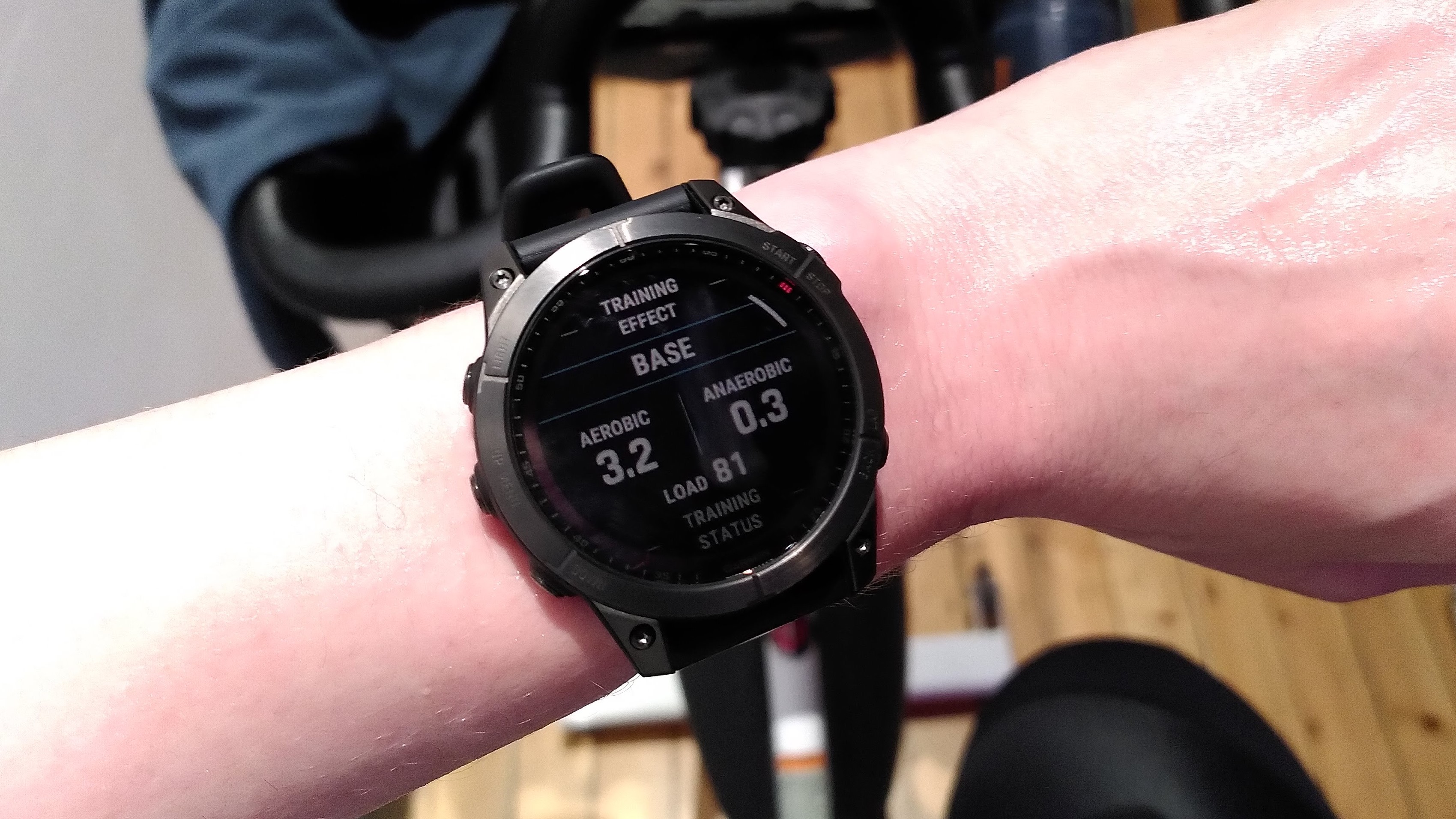
This is base training, and should be mixed up with some more intense work if my fitness is to keep moving in the right direction.
Afterwards, I take what was originally supposed to be a short nap, but ends up being a couple of hours of proper sleep. I prise my eyes open long enough to have dinner before hitting the hay again. In the morning, I find that the Fenix 7 has recorded this entire period as sleep – from when I first settled down for a nap to my morning alarm – with my dinner marked as a brief period of wakefulness. It’s a fair cop.
Day two: Parkrun
It's Saturday, which means Parkrun. If you've not tried it, you really should – it's a free 5km run, organized by volunteers, which takes place all over the world. There are no timing chips, but you get what's essentially a gun time; as you cross the finish line you're handed a token that corresponds with your finish, and a volunteer then scans both this, and a unique barcode that you've printed out or are carrying on a wristband. It's a lovely way to start the weekend, and checking out different courses is a great way to try routes you might otherwise miss.
Get daily insight, inspiration and deals in your inbox
Sign up for breaking news, reviews, opinion, top tech deals, and more.
There are a couple of options near me: an out-and-back route that takes you up a gradual incline for the first 2.5km, then down again on the return leg, and a more undulating course that takes in several loops of a park. I opt for the latter, but oversleep and arrive partway through the safety briefing. Oops.
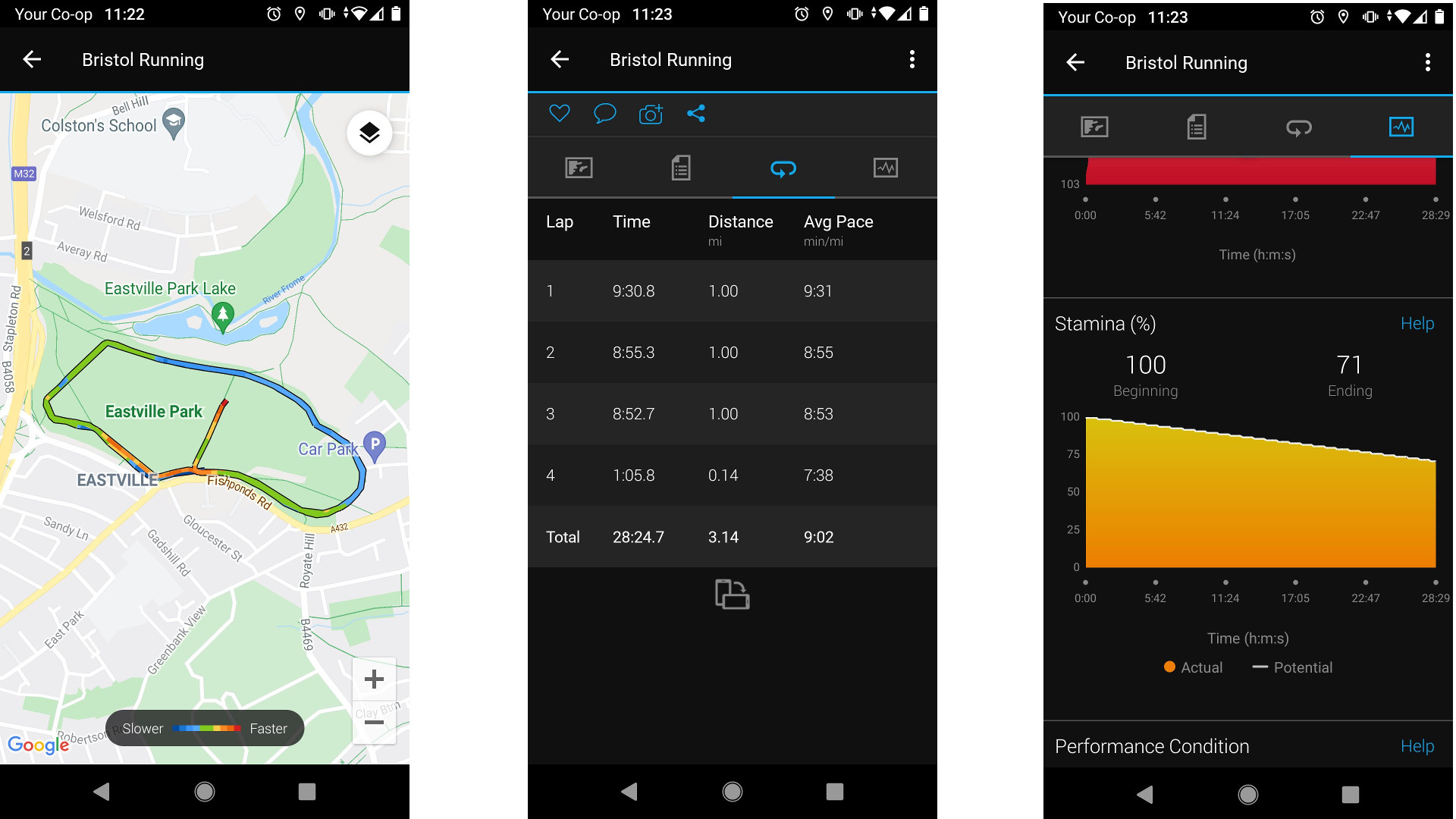
Thankfully I've been before so I'm familiar with the fundamentals of the course, but it’s icy underfoot, and my tardiness means I didn’t hear that the usual course has been changed to remove a section that takes us downhill and around a lake. My mind is elsewhere, and I don’t realise this until I’m nearly at the end, having not pushed as hard as I'd like on the final lap. Oops again/
Nevertheless, I spent most of the time in heart rate training zone four, and the Fenix reports that it was a productive session. According to the visual race predictor, I should be able to do much better in ideal conditions. It's handy having a personal goal that's tailored to my own fitness level.
Day three: long club run
The Fenix 7 suggests a rest day, but that’s not going to happen. It’s Sunday, which means my club’s weekly long run.
It's not a taxing one, though. We keep the pace chatty and follow a route that takes us into the countryside and past a smallholding with donkeys and pygmy goats – a perfect spot to take on some water and coo over the animals. I made sure to enable auto-pause before heading out so I wouldn't be penalised for time spent fussing the farm dog, who really enjoys a good ear scratch.
I notice that the club founder is using a Garmin Forerunner 55 – it's a great watch, and has everything most runners will need until they start itching to shave seconds off their personal bests. I usually use a Garmin Instinct Solar, and I might have assumed that the Fenix 7 would be overkill, but I'm finding its training insights genuinely interesting.
Despite the fairly easy pace, I start to flag a little towards the end. As if to say 'I told you so', the Fenix 7 shows my stamina dropping rather rapidly throughout the run, and I finish below 30%.
The watch itself is much less depleted. This is the Solar Sapphire edition, but until now it's had very little in the way of sunlight. Garmin's battery life predictions are based on the assumption it'll have at least three hours of sun per day, but it's winter here in the UK, which doesn't lend itself to bare wrists unless you're running for a decent length of time.
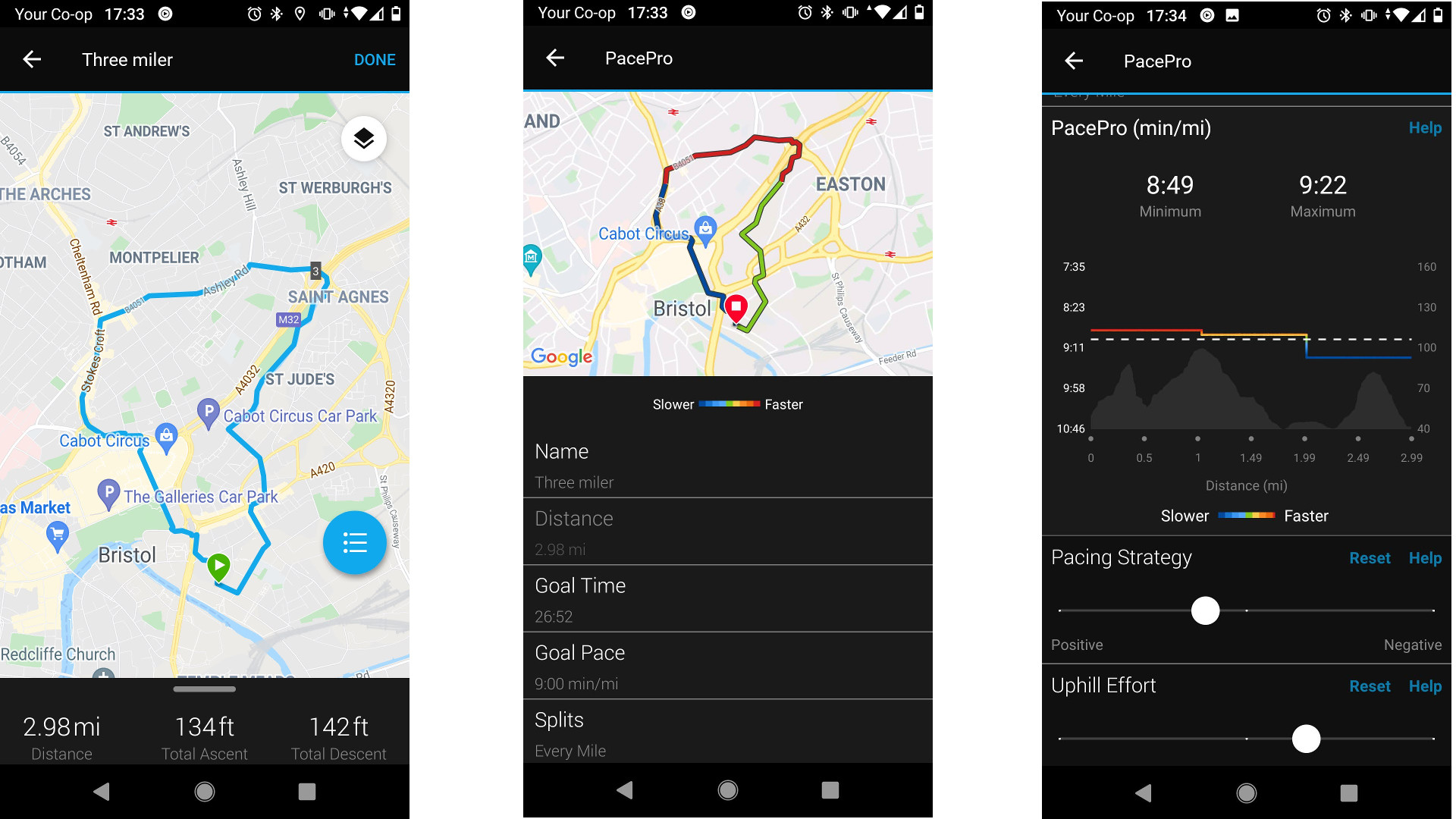
Back at home, after a restorative coffee and cake, I delve into the course settings in Garmin Connect, and ask the app to plot a three-mile circular route bearing north. It's impressive - the app generates a neat little route, which I'll be able to follow using the watch later. It can also build a pacing strategy and calculate splits accordingly.
That'll come in extremely handy when I'm leading runs solo and need ideas for new routes. I'll still have to run them alone first to do a risk assessment, but it's far more convenient than sketching something out on Plotaroute and then memorizing landmarks along the way.
Day four: back on the bike
The Fenix 7 is telling me to take a rest day again, but I really want to compare its results with a chest strap HRM, and there are only so many days in a week. This proves to be one of the tougher Les Mills Trip sessions, with lots of power training in the form of quick jumps designed to leave your thighs burning.
Another of the Fenix 7's handy training features is the ability to see your seven-day training load at a glance, so you can tell whether you're training in a way that will actually benefit your fitness. An ideal seven-day training load for me is 176-396, and after today's Trip I'm sitting at 456. This might help explain things like almost sleeping through dinner and missing half a Parkrun briefing.
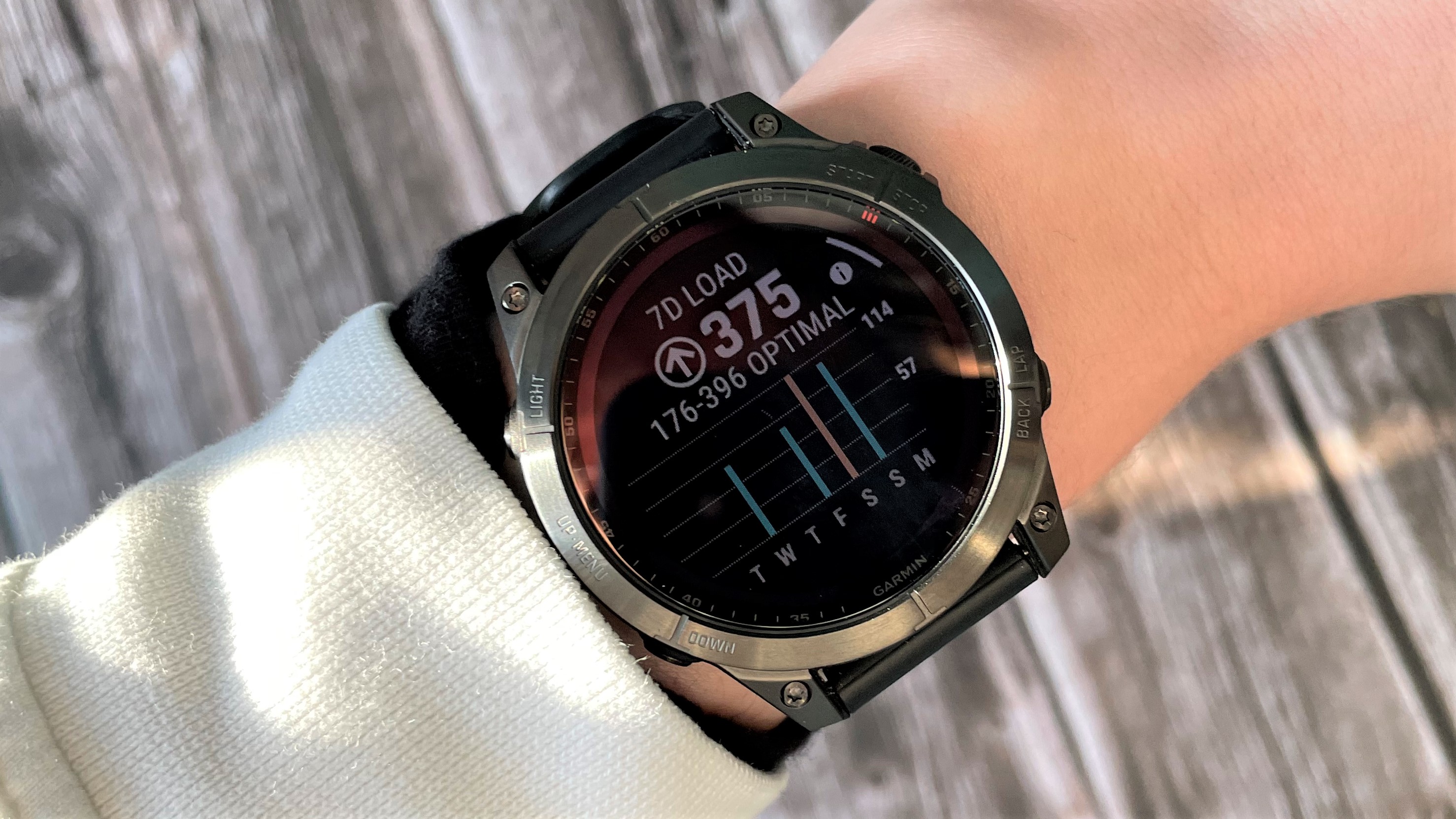
Ideally I'd fit in that rest day tomorrow, but it’s going to be another club night – this time focusing on hills with a mixed ability group, most of whom are planning to run the local half marathon in a few months’ time. There’s no shortage of killer hills in Bath, but we want to make sure they’ve got the technique down, so we're planning to take them to a short incline and run through a series of drills focusing on form and pacing. That counts as rest, right?
Right?
- We've tested and ranked the best road running shoes

Cat is TechRadar's Homes Editor specializing in kitchen appliances and smart home technology. She's been a tech journalist for 15 years, having worked on print magazines including PC Plus and PC Format, and is a Speciality Coffee Association (SCA) certified barista. Whether you want to invest in some smart lights or pick up a new espresso machine, she's the right person to help.